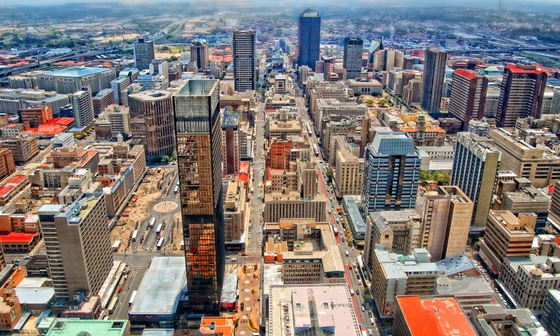It is Megalopolis, a band of cities divided into dots with strong transportation and communication infrastructure. The clustered regions are considered as one organism as they are functionally integrated into the economy, society, and culture.

ⒸShutterstock
Representative Megalopolis regions are the Atlantic coast of the northeastern United States and the Pacific coast of Japan. China has the Yangtze River Delta (Shanghai, Jiangsu and Zhejiang).
And it is pushing ahead with the construction of another giant Megalopolis in China. It is the Jingjinji area. It includes 11 cities in Tianjin and Hebei Province, with Beijing as the center.

Jingjinji area ⓒ Baidu Biker
In 1982, China referred to the three regions as the so-called’metropolitan area’, and in 2004 began working on the establishment of a full-scale regional plan. The area of Jingjinji area is 216,000㎢, which is similar to the Korean Peninsula (219,000㎢). The resident population is about 100 million people, and the GDP reaches 6.500 billion yuan (about 1,116 trillion 5050 billion won).
In terms of scale alone, it can be said that it is’Megalopolis’ in name and reality, but the level of development is far below that of Megalopolis, which is located in the United States and Japan.
The most common problem is the development imbalance.
Megalopolis organically connects regions and generates synergies in various fields. However, even years after the planning was made, the concentration of Beijing has not been resolved. Accordingly, China began implementing various policies in 2014, with regional cooperative development as its main national strategy.
Beijing has continued to change its industrial structure over the past few years, with a strategy of shrinking the size of the city, Tianjin and Hebei provinces, on the contrary.
Beijing moved the city-level administrative center located in Beijing to the suburbs or to Tianjin City, and moved wholesale markets, general manufacturing enterprises, schools, and hospitals to the outside.
Beijing Daxing International Airport, which opened in 2019, is located in the middle of Beijing, Tianjin, and Xian’an New District, and is planned to be used as a base for the cooperative development of Jingjinji (Beijing, Tianjin, Hebei).

Beijing Daxing International Airport. Ⓒ Baidu Encyclopedia
Tianjin has developed the information technology application innovation industry and accelerated the construction of an international aviation hub. The city of Tianjin proposed a joint development structure to develop the Tianjin area and Binhai New Area together, and proposed a plan to form a’green barrier’ of 736 km2 between the two cities to connect with the ecological enrichment zone in the Jingjin area.
The biggest beneficiary of Jingjinji cooperation is Hebei Province.
Hebei could be said to be an area with stagnant growth despite being a hinterland of the metropolitan area. However, through the construction of the Xing’an New District, Beijing’s superior innovation elements were introduced by absorbing Beijing’s capital functions. Currently, in cooperation with Tianjin, it is promoting a smart city plan to develop an IT industry cluster such as autonomous driving and artificial intelligence.

Technicians in Tianjin are guiding students in training at the Hebei Provincial Vocational and Technical Education Center training workshop. ⒸShinhwa Communication
As the development of Jingjinji accelerates, more human resources have flowed into the Xiongan New District, and synergies between the two regions are increasing through human-to-person exchanges with Beijing. Currently, about 70% of the enterprises that have been permitted to occupy in the Xi’an New Area are Beijing, and in particular, companies related to IT, science and technology and environmental technology are actively participating in smart city projects in each field of the Xi’an New Area.
According to Xinhua News Agency, Hebei Province was commissioned by Beijing and Tianjin for 1,171 projects worth more than 50 million yuan (about 8.5 billion won) during the ’13th Five Years’ Plan (2016-2020). The total investment of the project that was commissioned in Beijing and Tianjin and started construction reached 1,134.8 billion yuan (194,42.5 billion won).

Panoramic view of Xing’an Station on the Jingsiung Urban Railway that connects Beijing and Xung’an New District.ⓒ Xinhua Communications
Recently, the convenient transportation environment in the Jingjinji area has been established, providing new opportunities for urban development.
At the end of last year, the entire section of the Jing-Sung urban railway linking Beijing and the Xing’an New District was opened, reducing travel time between regions by about half. Asia’s largest high-speed rail station, Xiang’an Station, will be connected to Daxing International Airport in 2023, which is expected to bring greater synergy.

ⒸShinhwa Communication
China still maintains its goal of building the Jingjinji area into a world-class megalopolis. It is reportedly included in the ’14th Five Years’ plan starting this year.
The Jingjinji project is expected to play an important role in the growth engine of China’s economy in a situation where global uncertainties such as US sanctions and Corona 19 increase. It is expected that strengthening the internal growth engine of the economy and solving the constraints of integration will become more important.
China Lab = Kim Eun-soo, editor

China Lab
![]()
